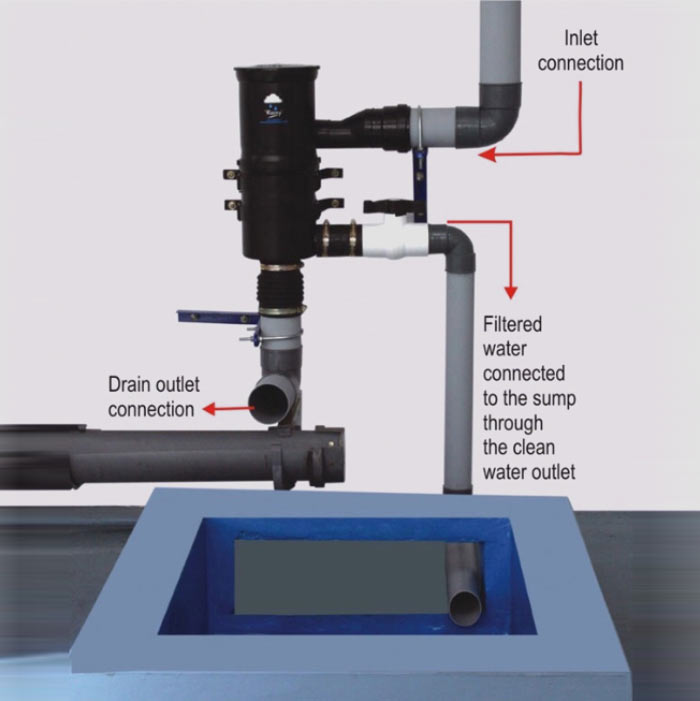- info@idealsystems.in
- +91 9890805654

Ideal System & Services is one of the leading rainwater harvesting system manufacturers, suppliers, and exporters in Maharashtra, India. We design and develop advanced systems that transform every drop of rain into a valuable resource, helping you achieve complete water independence and long-term sustainability.
Whether you are developing a new commercial project, industrial estate, or large residential society, our innovative technology ensures maximum groundwater recharge and provides clean, soft water for multiple applications.
Install one of our advanced rainwater harvesting systems today to enjoy a reliable, cost-effective solution that significantly reduces your utility bills and helps your organization become a true green champion. Make a smart choice today—secure your own water source with our *Apna Paani* system for a sustainable tomorrow!
Rainwater Harvesting (RWH) is a simple yet highly effective method of collecting and storing rainwater that falls on rooftops or open areas, instead of allowing it to run off and go to waste. This harvested water can be immediately used for various non-potable purposes and is also directed into underground aquifers to recharge groundwater levels naturally.
As one of the leading rainwater harvesting system manufacturers in Maharashtra, India, we offer a wide range of solutions based on different rainwater harvesting methods, as outlined below.
Below is a detailed table of our rainwater harvesting systems in Maharashtra, India, providing comprehensive technical specifications and key information to help you choose the right solution for your needs.
| Component | Technical Focus (Industrial RWH) | Key Function |
|---|---|---|
| Catchment | Large industrial rooftops; non-leaching materials. | Maximize water collection volume. |
| Pre-Filtration | Automated First-Flush Diverters; fine-mesh screens (≤1 mm). | Remove bulk debris and initial dirty runoff. |
| Pipework | UV-resistant HDPE/SS; sized for peak flow. | Efficient, rapid, and durable water transport. |
| Storage Tank | Large-volume underground cisterns (≥50,000 Litres); opaque. | Store large reserves; prevent contamination/algae. |
| Main Filtration | Vortex filters; multi-stage sediment filters (≤20 microns). | Remove fine suspended solids before storage/use. |
| Treatment | UV Disinfection; Chlorination/Ozonation. | Ensure water meets quality standard for use (e.g., cooling, process water). |
| Pumping | Dual Submersible Pumps (Duty/Standby); VFD control. | Reliable, energy-efficient, and constant pressure supply. |
| Control | PLC-based Smart Systems; BMS integration; level sensors. | Automated operation, monitoring, and fault management. |
| Backup | Automated Mains Water Top-Up via an Air Gap. | Prevent cross-contamination and ensure continuous supply. |
The fundamental elements of a rainwater harvesting in India system are:
The Ideal System & Services is a leading rainwater harvesting manufacturer, supplier, and exporter in Maharashtra, India. By investing in a robust RWH system, you actively contribute to groundwater conservation while ensuring a sustainable, low-cost water supply for your operational needs.
Our technical expertise allows us to provide credible, tailor-made solutions that offer a quick return on investment and position your organization as a responsible corporate citizen. Choose an RWH system today to combat water stress and support the creation of a water-secure future in Maharashtra, India. Contact us for more details.
An Ultra Filtration (UF) Plant refers to a contemporary water purification system, where water is purified using a physical barrier, which is a semi-permeable membrane. With this membrane there are microscopic pores that block and trap physically, the fine suspended solids, turbidity, colloids and more importantly the bacteria and viruses and leave the clean water and dissolved salts to pass through.
Leave your information and submit to us. Subscribe to our newsletters for more updates and reports.